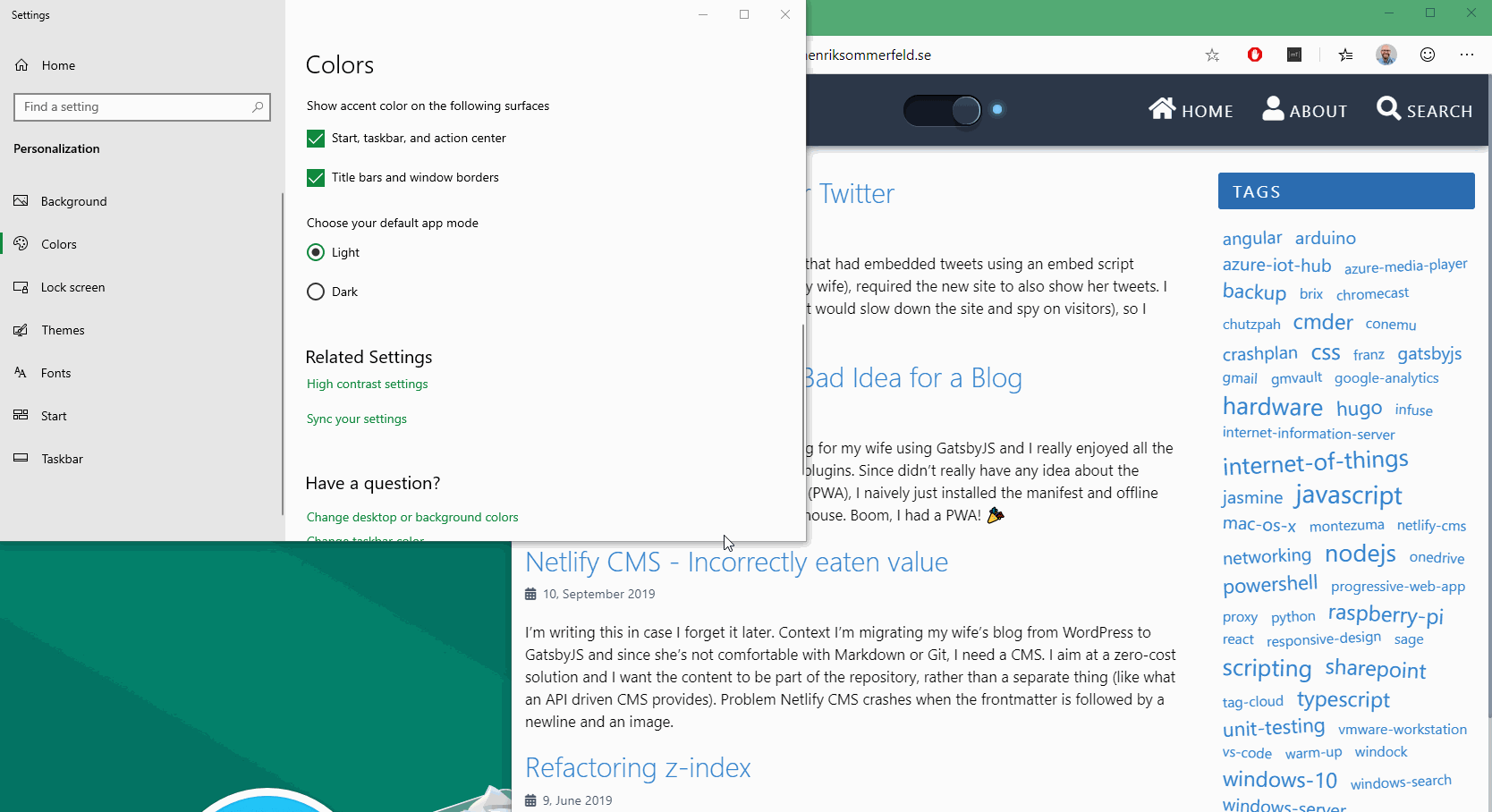Dark Mode Learnings 🌙

Photo by Jay Wennington on Unsplash.
So, I decided to implement dark mode on my website (to tackle parental leave boredom). I’ll describe what I did and what I could have done differently in hindsight in these areas:
- Different CSS files VS
bodyselector - Provide a switch between modes?
- Messing up Sass variables and CSS variables
- Adjust images with filter
Background
Supporting different themes on a website is very simple, I remember that I built three different themes that you could choose between on my website almost 20 years ago when I was learning about CSS and the semantic web. It’s just a matter of switching .css files. Those themes had different layout where the navigation would be placed differently and much more. Dark/light mode is just a matter of changing colours.
Of course the web has evolved a bit since the Web’s youth. The basic techniques you need today are:

My starting point was the extensive blog post named Hello darkness, my old friend. It gives a background and describes an implementation that I pretty much followed.
It uses a light.css and a dark.css which are conditionally loaded with media queries. These files define the same set of CSS variables that are then used in a main.css.
<link rel="stylesheet" href="/dark.css" media="(prefers-color-scheme: dark)">
<link rel="stylesheet" href="/light.css" media="(prefers-color-scheme: no-preference), (prefers-color-scheme: light)">
This works great and uses the theme of the operating system, here light theme is the default if the browser doesn’t provide this information. It’s when you add the possibility to manually switch between themes it becomes a bit more complicated.
Different CSS files VS body selector
A slightly different approach is to place the media query inside a main.css and include all the CSS variables there. My site is build with Hugo and uses one main CSS file, rather than a component system, so I don’t have any deferring of non-critical CSS anyway. Given that, I think a few extra CSS variables wouldn’t make difference.
In that case I could set a class or data attribute on the body tag and use that as my condition in CSS.
<body class="dark-theme">
Provide a switch between modes?
Do you really need a switch or is it sufficient with the device setting for light/dark? If I hadn’t taken the extra steps of adding a switch, it would have been a lot simpler, and maybe good enough, in hindsight. Given that I have a switch, borrowed from Pure CSS Smooth Toggle Swtich Demo, I think it would have been easier to toggle a CSS class or data attribute than modifying the CSS link tags like I do.
Messing up Sass variables and CSS variables
A stupid mistake I made a couple of times during development was to confuse the syntax of Sass/SCSS variables and CSS variables, especially when using Sass functions such as lighten, darken and transparentize. Since CSS variables aren’t checked at compile time, a few Sass variables sneaked into the resulting CSS file.
Adjust images with filter
A bonus feature I borrowed straight from Hello darkness, my old friend is to mute images a bit. I didn’t want to go to the extremes, but I do decrease brightness and saturation somewhat in dark mode.